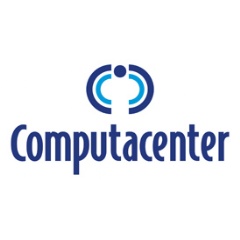Refocusing your IT development strategy
Big data has become a key factor in strategic planning of any business reliant on IT systems and shifted the focus to cloud storage. More than 60 per cent of medium or large companies have invested in their own private online storage to manage their core infrastructure, but the move requires some critical considerations.
The changing role of IT has refocused the managing of data away from a purely technology approach to a more functional outcome, that is driven by the needs of the end users. Sofware defined networks (SDNs) are at the forefront of business evolution and finding a solution that fits your operations calls for expert advice from a consultancy like Computacenter, who have produced an insightful guide, downloadable here.
While SDN will become the norm for managing data, it’s the business case that will define the timeframe, according the white paper. A company should upgrade for change’s sake, it suggests. Unless the potential consumers of your hybrid cloud services actually ‘use’ them, there’s little value added by their introduction.
One of the key problems company’s face is the proliferation of ‘shadow IT’, or the tendency for staff or others to use non-approved cloud support or communication channels, such as private email. According to Computacenter’s experts, this red flag should be an indicator of what requirements need to be written into the spec to ensure the new system creates work efficiency.
“Business users are tired of asking IT to support the challenges they face, so where they don’t get the services they need from IT, they go outside to cloud and SaaS-based providers,” he says. “This is leaving central IT asking what it needs to do to remain relevant. Can it re-invent itself with an as-a-Service model?”, says Paul Casey, a chief technologist with this UK based company.
This is, of course, driven by the consumer,” Paul continues. “Enterprise IT users want to use mobile platforms; they expect a social presence and the ability to order, collaborate and live online as part of a modern working style.”
So, when it comes to business innovation do we all need to jump on the Software Defined Networking (SDN) wagon right now? No, says Colin Williams, a colleague of Paul’s, in charge of networking, security and digital collaboration.
“The truth is that there is nothing fundamentally wrong with the way the networks are today,” Colin explains. “If there was something wrong, UK and global PLC would fail. So clearly, things haven’t ground to a halt without SDN. This forces the CIO to ask whether there is a need to shut down old ways of working to benefit from a transition to SDN now, or whether they should wait and see what happens.
“There are areas of technology infrastructure where it does make sense, but this is really about the business case. If you operate in an environment that would benefit from automation, dynamic programming, orchestration, etc, where you want to deliver network change ‘on the fly’ and in sync with the rapid release of applications, then SDN is right for you, right now.”
Colin’s advice to CIOs and their networking teams for IT service delivery is to ignore the market and vendor hype. “My point is that the decision should be driven by your business, not by the promise of the technology, either today or in five years,” he says.
To find out more, as well as insightful advice on other processes related to cloud IT, you can read more and consult with Computacenter here
( Press Release Image: https://photos.webwire.com/prmedia/11240/204524/204524-1.jpg )
WebWireID204524
- Contact Information
- Alex Brooks
- Account Director
- Octopus Group
- computacenter@weareoctopusgroup.net
This news content may be integrated into any legitimate news gathering and publishing effort. Linking is permitted.
News Release Distribution and Press Release Distribution Services Provided by WebWire.
